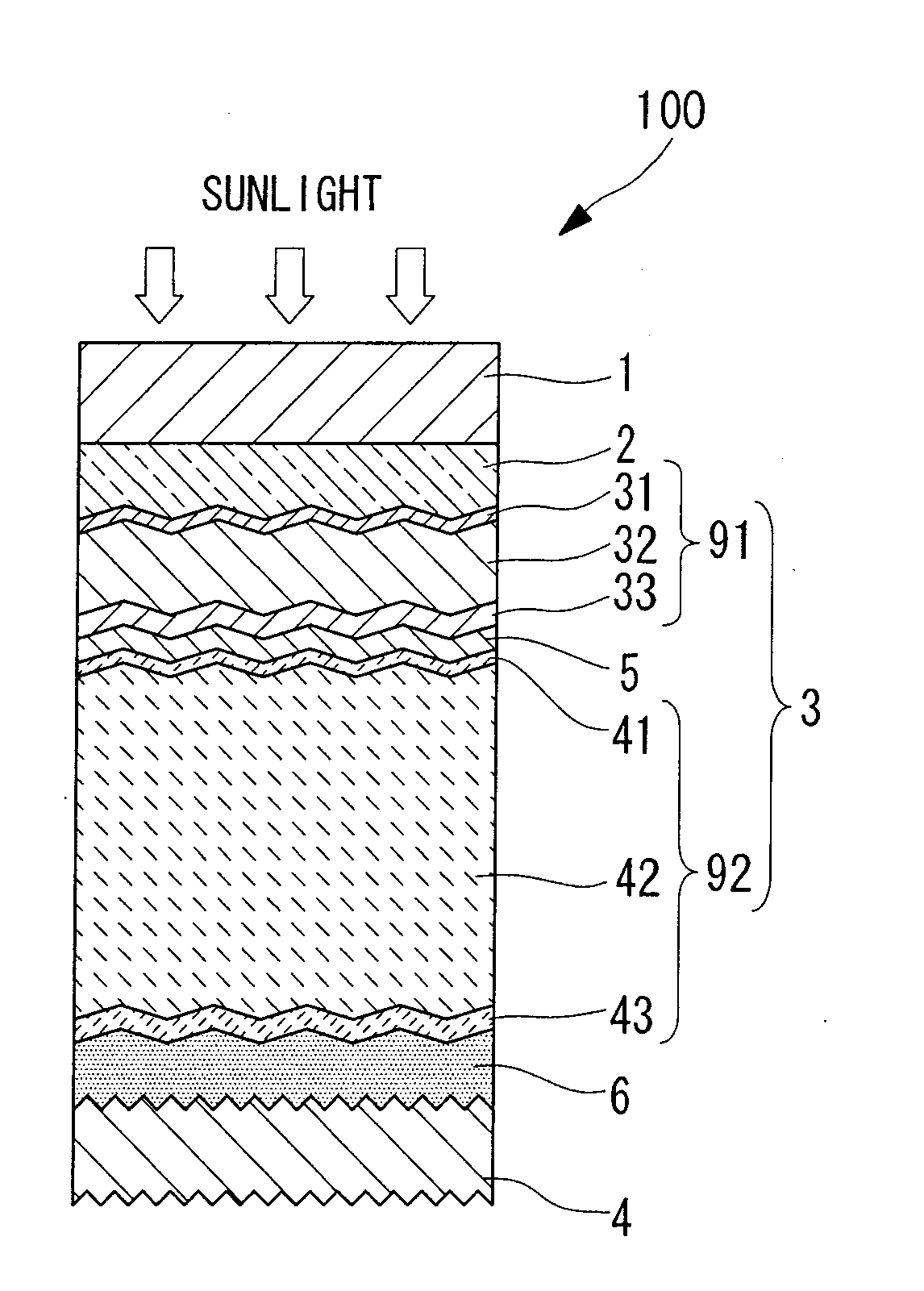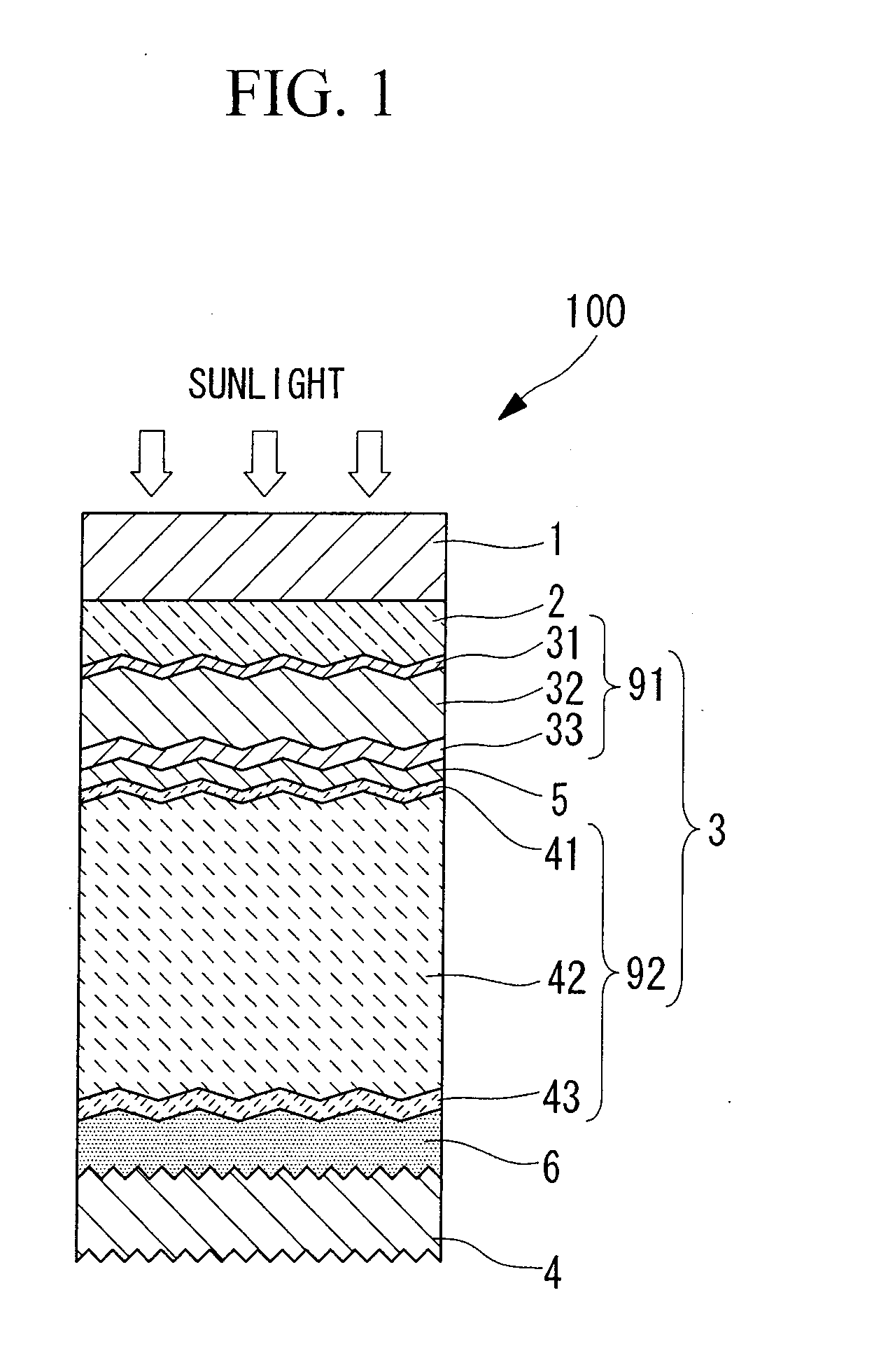Photovoltaic device and process for producing same
a photovoltaic device and photovoltaic technology, applied in the direction of semiconductor/solid-state device manufacturing, semiconductor devices, electrical devices, etc., can solve the problems of fine uneven texture on the substrate-side surface of the metal layer, insufficient modification of the layer structure alone, and increase in crystal grain size, so as to reduce the height variation of surface unevenness, improve the effect of surface plasmon absorption, and reduce the effect of uneven heigh
- Summary
- Abstract
- Description
- Claims
- Application Information
AI Technical Summary
Benefits of technology
Problems solved by technology
Method used
Image
Examples
examples
(Effect of Substrate Temperature During Deposition on the Surface Shape of a GZO Film Surface)
[0092]A GZO film was deposited on a glass substrate. Using a DC sputtering apparatus with a Ga-doped ZnO sintered body as the target, film deposition was conducted under conditions including a discharge gas composed of argon and oxygen, a film thickness target of 80 nm, and a substrate temperature of 25° C., 60° C., 135° C. or 200° C.
[0093]The surface shapes of the GZO films deposited at each of the different substrate temperatures were inspected using an AFM (NanoScope D-3100, manufactured by Digital Instruments Inc.), with each sample inspected using a tapping mode within two arbitrary fields of view, under conditions including a field of view of 2 μm×2 μm, a resolution of 512 pixels, and a Z-range of either 100 nm / div or 500 nm / div. An average value for the surface area magnification ratio was determined from the obtained AFM images. Using a cross-sectional profile of the AFM image, the ...
PUM
 Login to View More
Login to View More Abstract
Description
Claims
Application Information
 Login to View More
Login to View More - R&D
- Intellectual Property
- Life Sciences
- Materials
- Tech Scout
- Unparalleled Data Quality
- Higher Quality Content
- 60% Fewer Hallucinations
Browse by: Latest US Patents, China's latest patents, Technical Efficacy Thesaurus, Application Domain, Technology Topic, Popular Technical Reports.
© 2025 PatSnap. All rights reserved.Legal|Privacy policy|Modern Slavery Act Transparency Statement|Sitemap|About US| Contact US: help@patsnap.com



